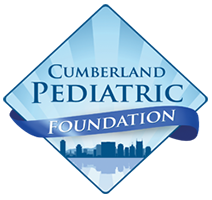Metropolitan Social Services
Planning, Coordination & Social Data Analysis Newsletter
October 2015
Child Poverty Affects Adult Success
Child Poverty and Adult Success from the Urban Institute (September 2015) notes that children in the U.S. are disproportionately poor, with one in five children in poverty compared to one in eight adults. Among ever-poor children (poor for at least one year before age 18), 38.8% are poor for at least one full year before they are age 18, with the rate much higher for black children at 75.4%.
Child Poverty indicates that 10.5% of all children and 38.5% of black children spend at least half their childhoods living in poverty (persistent childhood poverty). This often results in impaired academic achievement and later employment challenges. It describes findings from 40 years of data (1968-2009) from the Panel Study of Income Dynamics that suggest that persistently poor children have impaired outcomes compared to other poor children.
The future of persistently poor children is linked to the length of time they are in poverty. Persistently poor children are 13% less likely to graduate from high school and 43% less likely to complete college than children who are poor but not persistently poor.
The educational level of their parents is connected with the academic achievement of persistently poor children. Another factor related to lower academic achievement for persistently poor children is residential instability (moving three or more times). Living in multigenerational households (that include both parents and grandparents) improve the chances for children in persistently poor households, but not in ever-poor.
The data is compelling to show that, “Adult achievement is related to childhood poverty and the length of time they live in poverty.” Many other factors are described in Child Poverty, which also notes ever-poor children living in a female-headed household increases the likelihood of being arrested, but not related to educational achievement, employment or teen childbearing. However, with persistently poor children, the longer a child lives in a female-headed household, the less likely the child is to complete high school.
Child Poverty says that compared to never-poor children, the ever-poor children are “less successful in their educational achievement and employment, and they are more likely to have a nonmarital teenage birth and some involvement with the criminal justice system. Children who spend half their childhood living in poverty fall even further behind.” It highlights the significance of parental education, childhood residential stability and potential benefits for persistently poor children living in a multigenerational household.
According to the 2014 American Community Survey, the poverty rate for those under age 18 was 33.1% in Davidson County, compared to 26.2% for Tennessee and 21.7% for the U.S.
________________________________________
KIDS COUNT Ranks Davidson 87th of Tennessee Counties
The Tennessee Commission on Children and Youth recently released the annual KIDS COUNT data on child well-being. KIDS COUNT is a project of the Annie E. Casey Foundation and provides public officials and advocates with reliable data, policy recommendations and tools to improve policies to benefit children and families.
The 2014 report ranks Davidson County 87th out of 95 Tennessee counties on factors related to child well-being (safety, health, education, nurtured, engaged). The map shows that Davidson County is in the lowest quintile, while most of the surrounding counties are in the highest quintile.
Out of 95 counties, Davidson County ranked extremely low in some specific indicators: 92nd in school suspensions, 90th in high school graduation rate, and 82nd in TCAP reading. Rankings for every Tennessee county are available online.
________________________________________
Davidson County Poverty Increases from 2013 to 2014
The U. S. Census Bureau released the 2014 American Community Survey on September 17, 2015. The data shows that poverty rate in Davidson County increased from 17.8% in 2013 to 19.9% in 2014. During that time, the Tennessee poverty rate increased from 17.8% to 18.3% and the U. S. poverty rate slightly decreased from 15.8% to 15.5%. The chart shows the Davidson County’s poverty rate for the past five years.
The poverty rate for children is even higher. Among minor children (under age 18), the 2014 Davidson County poverty rate was 33.3%. The highest rate of poverty, 47.9%, was experienced by single mothers with children under age 5.
Additional data will be released by the Census Bureau through December. Much more data and analysis will be available in the 2015 Community Needs Evaluation that will be released in Spring 2016. Previous editions of the annual Community Needs Evaluation are online.
________________________________________
Measuring Poverty
On September 18, 2015, Pew Charitable Trusts released Poverty Rate Drops in 34 States, DC. It discussed the 14.8% of the U.S. population who lived in poverty, the equivalent of 46.7 million, similar to the magnitude for the previous four years. It noted that Official Poverty Measure might not reflect the actual circumstances of the household because it uses so few factors for the formula (cash income and number in the household). (The Official Poverty Measure is used in the American Community Survey.)
The Census has provided a Supplemental Poverty Measure (SPM) that considers other economic factors, but the SPM is used only for research and not for program eligibility or for the state or local poverty data. In addition, it indicates that some states are considering creating their own poverty measures to more effectively estimate how many people in their states “have financial stress or live on the edge of poverty.”
According to the 2014 American Community Survey, Tennessee’s poverty rate for 2014 was 18.3%. Out of 50 states and the District of Columbia, Tennessee ranked 7th from the bottom.
________________________________________
Metropolitan Social Services
800 Second Avenue North, Nashville, TN 37201
Direct Services – 615-862-6458 Planning, Coordination & Social Data Analysis – 615-862-6494


